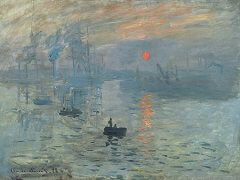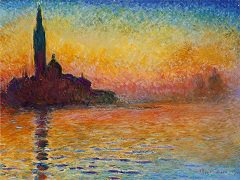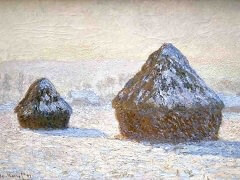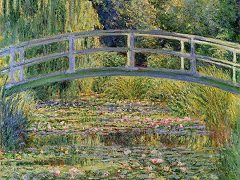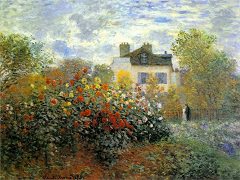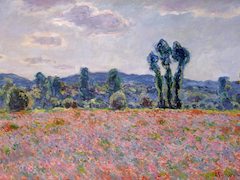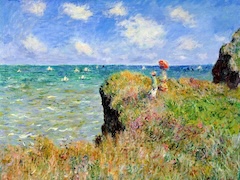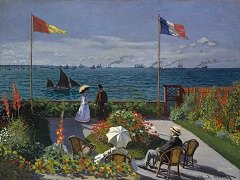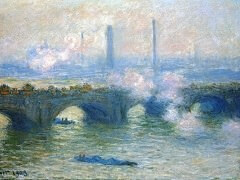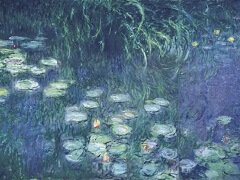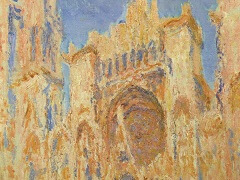The Manneporte (Etretat), 1883 by Claude Monet
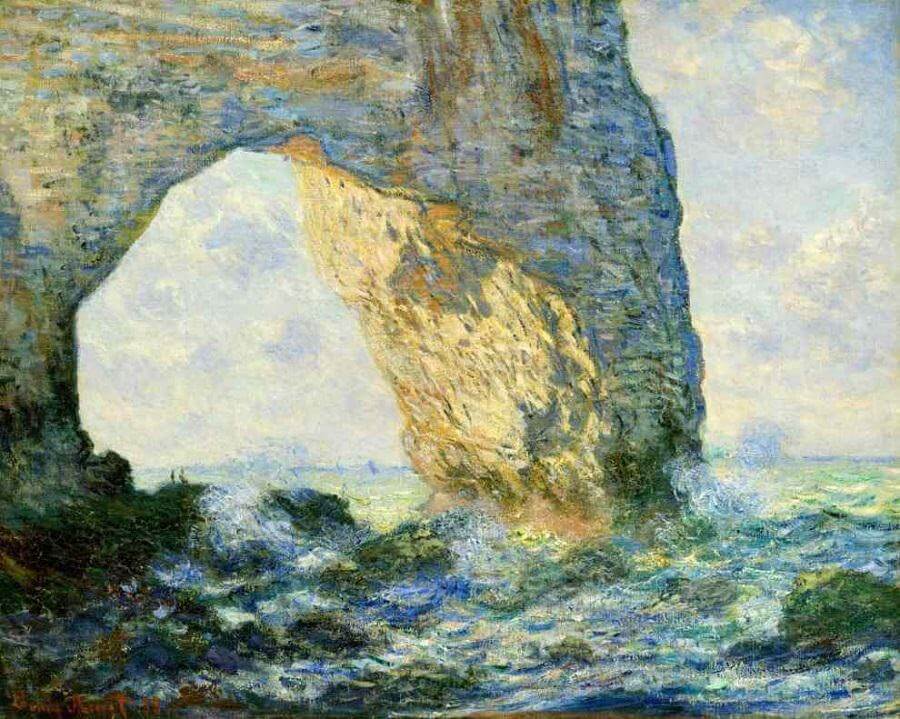
Claude Monet painted The Manneporte (Etretat) in 1883. The Manneporte, a huge natural arch that jutted out into the sea on the beach at Etretat, commanded Monet's attention during his stay on the Channel Coast in the early months of 1883. Monet spent most of February 1883 at Etretat, a fishing village and resort on the Normandy coast. He painted twenty views of the beach and the three extraordinary rock formations in the area: the Porte d'Aval, the Porte d'Amont, and the Manneporte. The sunlight that strikes the Manneporte has a dematerializing effect that permitted the artist to interpret the cliff almost exclusively in terms of color and luminosity. Most nineteenth century visitors were attracted to the rock as a natural wonder. Monet instead concentrated on his own changing perception of it at different times of day.
For this view, Monet positioned his easel facing west to take advantage of the low illumination of the setting sun. The frigid palette and thick brush strokes that describe the motion of the choppy waters evoke the physical discomfort posed by the challenge of plain air painting in winter.

